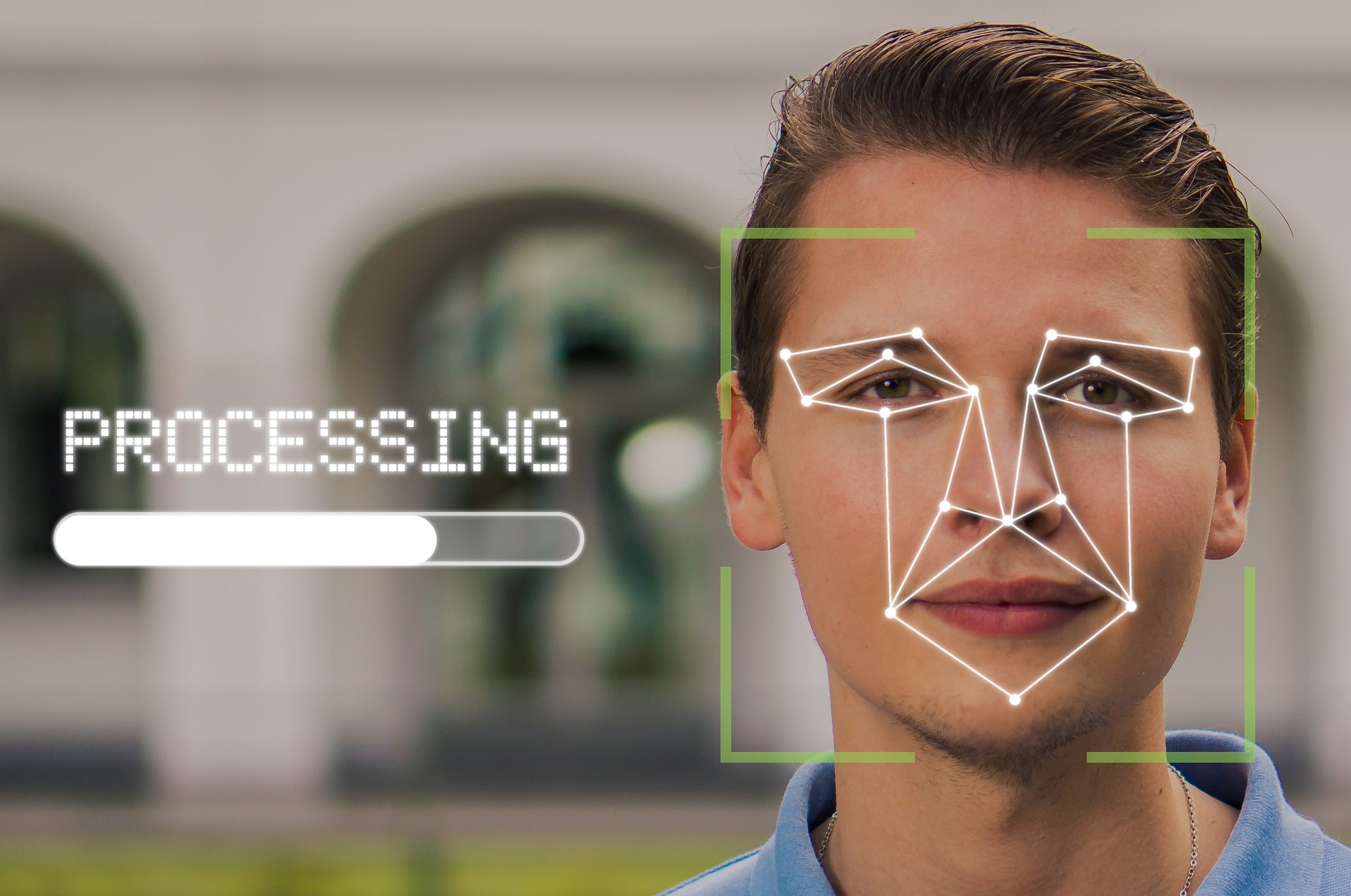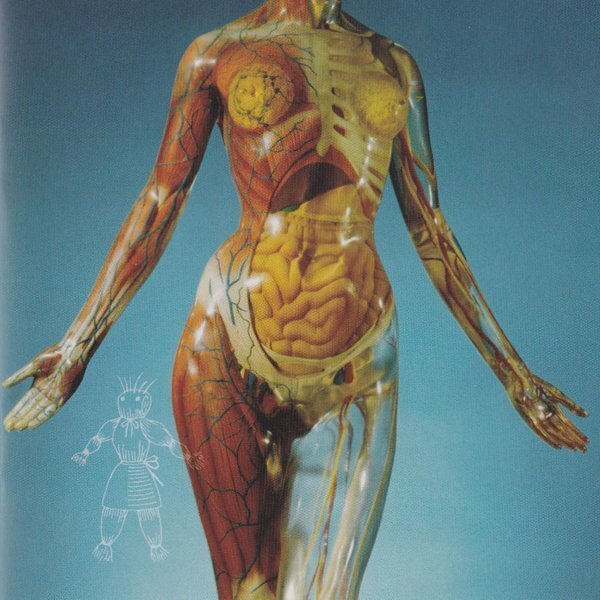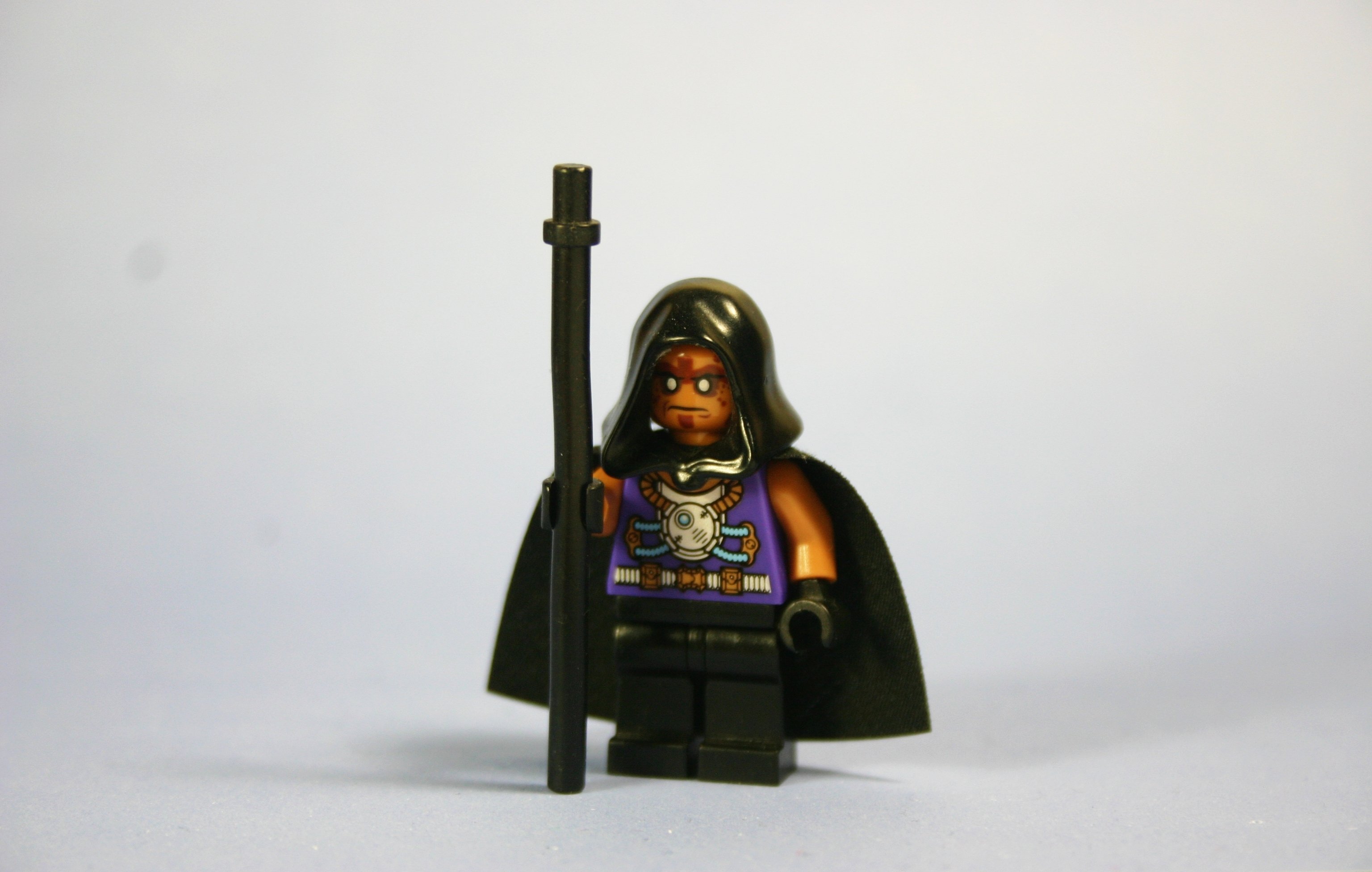A big biometric security company in the UK, Facewatch, is in hot water after their facial recognition system caused a major snafu - the system wrongly identified a 19-year-old girl as a shoplifter.
Not the first time facial recognition tech has been misused, and certainly won’t be the last. The UK in particular has caught a lotta flak around this.
We seem to have a hard time connecting the digital world to the physical world and realizing just how interwoven they are at this point.
Therefore, I made an open source website called idcaboutprivacy to demonstrate the importance—and dangers—of tech like this.
It’s a list of news articles that demonstrate real-life situations where people are impacted.
If you wanna contribute to the project, please do. I made it simple enough to where you don’t need to know Git or anything advanced to contribute to it. (I don’t even really know Git.)
I’ll link your site on my personal website, which has a link collection. Seems cool.
Nice, thanks. Your site is really clean. Dig it.
Thanks! I didn’t design it myself, just wrote the content. I’m using Jekyll and a premade theme. But yeah, I like the look too.
I wish I could find an English source about the guy who got woken by police assaulting him in his bed because he’d sent private sexy photos of him and his boyfriend via Yahoo mail. It’s definitely one of the things that “radicalised” me.
What a great idea for a page. People are becoming blase about privacy even though it’s still important.
Glad you like it.
And yeah, it’s foundational. We tolerate things digitally that we’d never tolerate in person.
Once I start connecting and analogizing digital to physical concepts in a conversation, it appears to “click” in their heads and they end up saying something along the lines of, “You’re right. It makes sense.”
Hence this project. I hope people can use this website and link it to people who need it to understand how this affects us all—now, not in the future.
From your webpage: Privacy because protects our freedom to be who we are.
I think a word is missing in that sentence.
Fixed it, thanks for flagging
They accidentally the whole word.
Lol it was the other way around… I actually added a word instead. Fixed
Tap for spoiler
it
now.
Please tell me a lawyer is taking this on pro bono and is about to sue the shit out of Facewatch.
For what? A private business can exclude anyone for any reason or no reason at all so long as the reason isn’t a protected right.
I’d be surprised if being born with a specific face configuration isn’t protected in the same way that race and gender are.
In the uk you can pet much guarantee that won’t happen because it would shut down their surveillance state.
deleted by creator
Stop giving corporations the power to blacklist us from life itself.
you will sit down and be quiet, all you parasites stifling innovation, the market will solve this, because it is the most rational thing in existence, like trains, oh god how I love trains, I want to be f***ed by trains.
~~Rand
I can see the Invisible Hand of the Free Market, it’s giving me the finger.
Can it give invisible hand jobs?
Yes, but they’re in the “If you have to ask, you couldn’t afford it in three lifetimes.” price range
Darn!
Right up your ass, no less.
It charged me for lube, and I thought about paying for it, but same-day shipping was a bitch and a half… I tried second class mail, but I think my bumhole would have stretched enough for this to stop hurting before it got anywhere near close to here so I just opted for that.
The whole wide world of authors who have written about the difficulties of this new technological age and you choose the one who had to pretend her work was unpopular
go read rand, her books literally advocate for an anti-social world order, where the rich and powerful have the ability to do whatever they want without impediment as the “workers” are described as parasites that should get in line or die
Are you suggesting they shouldn’t be allowed to ban people from stores? The only problem I see here is misused tech. If they can’t verify the person, they shouldn’t be allowed to use the tech.
I do think there need to be reprocussions for situations like this.
Well there should be a limited amount of ability to do so. I mean there should be police reports or something at the very least. I mean, what if Facial Recognition AI catches on in grocery stores? Is this woman just banned from all grocery stores now? How the fuck is she going to eat?
That’s why I said this was a misuse of tech. Because that’s extremely problematic. But there’s nothing to stop these same corps from doing this to a person even if the tech isn’t used. This tech just makes it easier to fuck up.
I’m against the use of this tech to begin with but I’m having a hard time figuring out if people are more upset about the use of the tech or about the person being banned from a lot of stores because of it. Cause they are separate problems and the latter seems more of an issue than the former. But it also makes fucking up the former matter a lot more as a result.
I wish I could remember where I saw it, but years ago I read something in relation to policing that said a certain amount of human inefficiency in a process is actually a good thing to help balance bias and over reach that could occur when technology could technically do in seconds what would take a human days or months.
In this case if a person is enough of a problem that their face becomes known at certain branches of a store it’s entirely reasonable for that store to post a sign with their face saying they are aren’t allowed. In my mind it would essentially create a certain equilibrium in terms of consequences and results. In addition to getting in trouble for stealing itself, that individual person also has a certain amount of hardship placed on them that may require they travel 40 minutes to do their shopping instead of 5 minutes to the store nearby. A sign and people’s memory also aren’t permanent, so it’s likely that after a certain amount of time that person would probably be able to go back to that store if they had actually grown out of it.
Or something to that effect. If they steal so much that they become known to the legal system there should be processes in place to address it.
And even with all that said, I’m just not that concerned with theft at large corporate retailers considering wage theft dwarfs thefts by individuals by at least an order of magnitude.
Even if she were the shoplifter, how would that work? “Sorry mate, you shoplifted when you were 16, now you can never buy food again.”?
Sounds like a VAC ban.
Well, this blows the “if you’ve not done anything wrong, you have nothing to worry about” argument out of the water.
That argument was only ever made by dumb fucks or evil fucks. The article reports about an actual occurrence of one of the problems of such technology that we (people who care about privacy) have warned about from the beginning.
the way I like to respond to that:
“ok, pull down your pants and hand me your unlocked phone”
I’m stealing this.
Gotta say, I don’t think Officer Chauvin is going to take well to your request.
Death to the worthless corpo world that allowed this bullshit in the first place! Towards anarchist communism and social revolution!
Please grow and change as a person
Despite concerns about accuracy and potential misuse, facial recognition technology seems poised for a surge in popularity. California-based restaurant CaliExpress by Flippy now allows customers to pay for their meals with a simple scan of their face, showcasing the potential of facial payment technology.
Oh boy, I can’t wait to be charged for someone else’s meal because they look just enough like me to trigger a payment.
I have an identical twin. This stuff is going to cause so many issues even if it worked perfectly.
Sudden resurgence of the movie “Face Off”
Ok, some context here from someone who built and worked with this kind tech for a while.
Twins are no issue. I’m not even joking, we tried for multiple months in a live test environment to get the system to trip over itself, but it just wouldn’t. Each twin was detected perfectly every time. In fact, I myself could only tell them apart by their clothes. They had very different styles.
The reality with this tech is that, just like everything else, it can’t be perfect (at least not yet). For all the false detections you hear about, there have been millions upon millions of correct ones.
Twins are no issue. Random ass person however is. Lol
Yes, because like I said, nothing is ever perfect. There can always be a billion little things affecting each and every detection.
A better statement would be “only one false detection out of 10 million”
You want to know a better system?
What if each person had some kind of physical passkey that linked them to their money, and they used that to pay for food?
We could even have a bunch of security put around this passkey that makes it’s really easy to disable it if it gets lost or stolen.
As for shoplifting, what if we had some kind of societal system that levied punishments against people by providing a place where the victim and accused can show evidence for and against the infraction, and an impartial pool of people decides if they need to be punished or not.
deleted by creator
I have this problem with my face in the TSA pre and passport system
Interesting. Can you elaborate on this?
Edit: downvotes for asking an honest question. People are dumb
it can’t be perfect (at least not yet).
Or ever, because it locks you out after a drunken night otherwise.
Or ever because there is no such thing as 100% in reality. You can only add more digits at the end of your accuracy, but it will never reach 100.
Can you please start linking studies? I think that might actually turn the conversation in your favor. I found a NIST study (pdf link), on page 32, in the discussion portion of 4.2 “False match rates under demographic pairing”:
The results above show that false match rates for imposter pairings in likely real-world scenarios are much higher than those from measured when imposters are paired with zero-effort.
This seems to say that the false match rate gets higher and higher as the subjects are more demographically similar; the highest error rate on the heat map below that is roughly 0.02.
Something else no one here has talked about yet – no one is actively trying to get identified as someone else by facial recognition algorithms yet. This study was done on public mugshots, so no effort to fool the algorithm, and the error rates between similar demographics is atrocious.
And my opinion: Entities using facial recognition are going to choose the lowest bidder for their system unless there’s a higher security need than, say, a grocery store. So, we have to look at the weakest performing algorithms.
My references are the NIST tests.
https://pages.nist.gov/frvt/reports/1N/frvt_1N_report.pdf
That might be the one you’re looking at.
Another thing to remember about the NIST tests is that they try to use a standardized threshold across all vendors. The point is to compare the results in a fair manner across systems.
The system I worked on was tested by NIST with an FMR of 1e-5. But we never used that threshold and always used a threshold that equated to 1e-7, which is orders of magnitude more accurate.
And my opinion: Entities using facial recognition are going to choose the lowest bidder for their system unless there’s a higher security need than, say, a grocery store. So, we have to look at the weakest performing algorithms.
This definitely is a massive problem and likely does contribute to poor public perception.
Thanks for the response! It sounds like you had access to a higher quality system than the worst, to be sure. Based on your comments I feel that you’re projecting the confidence in that system onto the broader topic of facial recognition in general; you’re looking at a good example and people here are (perhaps cynically) pointing at the worst ones. Can you offer any perspective from your career experience that might bridge the gap? Why shouldn’t we treat all facial recognition implementations as unacceptable if only the best – and presumably most expensive – ones are?
A rhetorical question aside from that: is determining one’s identity an application where anything below the unachievable success rate of 100% is acceptable?
Based on your comments I feel that you’re projecting the confidence in that system onto the broader topic of facial recognition in general; you’re looking at a good example and people here are (perhaps cynically) pointing at the worst ones. Can you offer any perspective from your career experience that might bridge the gap? Why shouldn’t we treat all facial recognition implementations as unacceptable if only the best – and presumably most expensive – ones are?
It’s a good question, and I don’t have the answer to it. But a good example I like to point at is the ACLU’s announcement of their test on Amazon’s Rekognition system.
They tested the system using the default value of 80% confidence, and their test resulted in 20% false identification. They then boldly claimed that FR systems are all flawed and no one should ever use them.
Amazon even responded saying that the ACLU’s test with the default values was irresponsible, and Amazon’s right. This was before such public backlash against FR, and the reasoning for a default of 80% confidence was the expectation that most people using it would do silly stuff like celebrity lookalikes. That being said, it was stupid to set the default to 80%, but that’s just hindsight speaking.
My point here is that, while FR tech isn’t perfect, the public perception is highly skewed. If there was a daily news report detailing the number of correct matches across all systems, these few showing a false match would seem ridiculous. The overwhelming vast majority of news reports on FR are about failure cases. No wonder most people think the tech is fundamentally broken.
A rhetorical question aside from that: is determining one’s identity an application where anything below the unachievable success rate of 100% is acceptable?
I think most systems in use today are fine in terms of accuracy. The consideration becomes “how is it being used?” That isn’t to say that improvements aren’t welcome, but in some cases it’s like trying to use the hook on the back of a hammer as a screw driver. I’m sure it can be made to work, but fundamentally it’s the wrong tool for the job.
FR in a payment system is just all wrong. It’s literally forcing the use of a tech where it shouldn’t be used. FR can be used for validation if increased security is needed, like accessing a bank account. But never as the sole means of authentication. You should still require a bank card + pin, then the system can do FR as a kind of 2FA. The trick here would be to first, use a good system, and then second, lower the threshold that borders on “fairly lenient”. That way you eliminate any false rejections while still maintaining an incredibly high level of security. In that case the chances of your bank card AND pin being stolen by someone who looks so much like you that it tricks FR is effectively impossible (but it can never be truly zero). And if that person is being targeted by a threat actor who can coordinate such things then they’d have the resources to just get around the cyber security of the bank from the comfort of anywhere in the world.
Security in every single circumstance is a trade-off with convenience. Always, and in every scenario.
FR works well with existing access control systems. Swipe your badge card, then it scans you to verify you’re the person identified by the badge.
FR also works well in surveillance, with the incredibly important addition of human-in-the-loop. For example, the system I worked on simply reported detections to a SoC (with all the general info about the detection including the live photo and the reference photo). Then the operator would have to look at the details and manually confirm or reject the detection. The system made no decisions, it simply presented the info to an authorized person.
This is the key portion that seems to be missing in all news reports about false arrests and whatnot. I’ve looked into all the FR related false arrests and from what I could determine none of those cases were handled properly. The detection results were simply taken as gospel truth and no critical thinking was applied. In some of those cases the detection photo and reference (database) photo looked nothing alike. It’s just the people operating those systems are either idiots or just don’t care. Both of those are policy issues entirely unrelated to the accuracy of the tech.
If it works anything like Apple’s Face ID twins don’t actually map all that similar. In the general population the probability of matching mapping of the underlying facial structure is approximately 1:1,000,000. It is slightly higher for identical twins and then higher again for prepubescent identical twins.
Yeah, people with totally different facial structures get identified as the same person all the time with the “AI” facial recognition, especially if your darker skinned. Luckily (or unluckily) I’m white as can be.
I’m assuming Apple’s software is a purpose built algorithm that detects facial features and compares them, rather than the black box AI where you feed in data and it returns a result. Thats the smart way to do it, but it takes more effort.
people with totally different facial structures get identified as the same person all the time with the “AI” facial recognition
All the time, eh? Gonna need a citation on that. And I’m not talking about just one news article that pops up every six months. And nothing that links back to the UCLA’s 2018 misleading “report”.
I’m assuming Apple’s software is a purpose built algorithm that detects facial features and compares them, rather than the black box AI where you feed in data and it returns a result.
You assume a lot here. People have this conception that all FR systems are trained blackbox models. This is true for some systems, but not all.
The system I worked with, which ranked near the top of the NIST FRVT reports, did not use a trained AI algorithm for matching.
I’m not doing a bunch of research to prove the point. I’ve been hearing about them being wrong fairly frequently, especially on darker skinned people, for a long time now. It doesn’t matter how often it is. It sounds like you have made up your mind already.
I’m assuming that of apple because it’s been around for a few years longer than the current AI craze has been going on. We’ve been doing facial recognition for decades now, with purpose built algorithms. It’s not mucb of leap to assume that’s what they’re using.
Meaning, 8’000 potential false positives per user globally. About 300 in US, 80 in Germany, 7 in Switzerland.
Might be enough for Iceland.
Yeah, which is a really good number and allows for near complete elimination of false matches along this vector.
You’re perfectly OK with 8000 people worldwide being able to charge you for their meals?
No you misunderstood. That is a reduction in commonality by a literal factor of one million. Any secondary verification point is sufficient to reduce the false positive rate to effectively zero.
secondary verification point
Like, running a card sized piece of plastic across a reader?
It’d be nice if they were implementing this to combat credit card fraud or something similar, but that’s not how this is being deployed.
Which means the face recognition was never necessary. It’s a way for companies to build a database that will eventually get exploited. 100% guarantee.
I promise bro it’ll only starve like 400 people please bro I need this
Who’s getting starved because of this technology?
A single mum with no support network who can’t walk into any store without getting physically ejected, maybe?
And yet this woman was mistaken for a 19-year-old 🤔
Shitty implementation doesn’t mean shitty concept, you’d think a site full of tech nerds would understand such a basic concept.
Pretty much everyone here agrees that it’s a shitty concept. Doesn’t solve anything and it’s a privacy nightmare.
Well I guess we’re lucky that no one on Lemmy has any power in society.
And a lot of these face recognition systems are notoriously bad with dark skin tones.
No they aren’t. This is the narrative that keeps getting repeated over and over. And the citation for it is usually the ACLU’s test on Amazon’s Rekognition system, which was deliberately flawed to produce this exact outcome (people years later still saying the same thing).
The top FR systems have no issues with any skin tones or connections.
There are like a thousand independent studies on this, not just one
I promise I’m more aware of all the studies, technologies, and companies involved. I worked in the industry for many years.
The technical studies you’re referring to show that the difference between a white man and a black woman (usually polar opposite in terms of results) is around 0.000001% error rate. But this usually gets blown out of proportion by media outlets.
If you have white men at 0.000001% error rate and black women at 0.000002% error rate, then what gets reported is “facial recognition for black women is 2 times worse than for white men”.
It’s technically true, but in practice it’s a misleading and disingenuous statement.
Edit: here’s the actual technical report if anyone is interested
There we go guys. It’s funny when nutty conspiracy theorists are against masks when they should be wearing frikin balaclavas
Even if someone did steal a mars-bar… Banning them from all food-selling establishments seems… Disproportional.
Like if you steal out of necessity, and get caught once, you then just starve?
Obviously not all grocers/chains/restaurants are that networked yet, but are we gonna get to a point where hungry people are turned away at every business that provides food, once they are on “the list”?
No no, that would be absurd. You’ll also be turned away if you are not on the list if you’re unlucky.
If that case ever does exist (god forbid), I hope that there’s something like a free-entry market so they can set up their own food solutions instead of being forced to starve.
If it’s a free market, and every existing business is coordinating to refuse to sell food to this person, then there’s a profit opportunity in getting food to them. You could even charge them double for food, and make higher profits selling to the grocery-banned class, while saving their lives.
That may sound cold-hearted, but what I’m trying to point out is that in this scenario, the profit motive is pulling that food to those people who need it. It’s incentivizing people who otherwise wouldn’t care, and enabling people who do care, to feed those hungry people by channeling money toward the solution.
And that doesn’t require anything specific about food to be in the code that runs the marketplace. All you need is a policy that new entrants to the market are allowed, and without any lengthy waiting process for a permit or whatever. You need a rule that says “You can’t stop other players from coming in an competing with you”, which is the kind of rule you need to run a free market, and then the rest of the problem is solved by people’s natural inclinations.
I know I’m piggybacking here. I’m just saying that a situation in which only some finite cartel of providers gets to decide who can buy food, is an example of a massive violation of free market principals.
People think “free market” means “the market is free to do evil”. No. “Free market” just means the people inside it are free to buy and sell what they please, when they please.
Yes it means stores can ban people. But it also means other people can start stores that do serve those people. It means “I don’t have to deal with you if I don’t want to, but I also can’t control your access to other people”.
A pricing cartel or a blacklisting cartel is a form of market disease. The best prevention and cure is to ensure the market is a free one - one which new players can enter at will - which means you can’t enforce that cartel reliably since there’s always someone outside the blacklisting cartel who could benefit from defecting from the blacklist.
That is some serious “capitalism can solve anything and therefore will, if only we let it”-type brain rot.
This “solution” relies on so many assumptions that don’t even begin to hold water.
Of course any utopian framework for society could deal with every conceivable problem… But in practice they don’t, and always require intentional regulation to a greater or lesser extent in order to prevent harm, because humans are humans.
This particular potential problem is almost certainly not the kind that simply “solves itself” if you let it.
And IMO suggesting otherwise is an irresponsible perpetuation of the kind of thinking that has led human civilization to the current reality of millions starving in the next few decades, due to the predictable environmental destruction of arable land in the near future.
This becomes even more ridiculous if you consider that we wasted about 1.05 billion tonnes of food worldwide in 2022 alone. (UNEP Food Waste Index Report 2024 Key Messages)
But no. Supermarkets will miss out on profits if they ban people from their stores who can’t pay.
Seems illogical? Because it is.

They’ve essentially created their own privatized law enforcement system. They aren’t allowed to enforce their rules the same way a government would be, but punishment like banning a person from huge swaths of economic life can still be severe. The worst part is that private legal systems almost never have any concept of rights or due process, so there is absolutely nothing stopping them from being completely arbitrary in how they apply their punishments.
I see this kind of thing as being closely aligned with right wingers’ desire to privatize everything, abolish human rights, and just generally turn the world into a dystopian hellscape for anyone who isn’t rich and well connected.
I can see this being used against ex-employees.
This can’t be true. I was told that if she has nothing to hide she has nothing to worry about!
We have so many dystopian futures and we decided to invent a new one.
Oh good… janky oversold systems that do a lot of automation on a very shaky basis are also having high impacts when screwing up.
Also “Facewatch” is such an awful sounding company.
The developers should be looking at jail time as they falsely accused someone of commiting a crime. This should be treated exactly like if I SWATed someone.
I get your point but totally disagree this is the same as SWATing. People can die from that. While this is bad, she was excluded from stores, not murdered
In the UK at least a SWATing would be many many times more deadly and violent than a normal police interaction. Can’t make the same argument for the USA or Russia, though.
Difference in degree not kind
You lack imagination. What happens when the system mistakenly identifies someone as a violent offender and they get tackled by a bunch of cops, likely resulting in bodily injury.
This happens in the USA without face recognition
That would then be an entirely different situation?
I mean, the article points out that the lady in the headline isn’t the only one who has been affected; A dude was falsely detained by cops after they parked a facial recognition van on a street corner, and grabbed anyone who was flagged.
That’s not very reassuring, we’re still only one computer bug away from that situation.
Presumably she wasn’t identified as a violent criminal because the facial recognition system didn’t associate her duplicate with that particular crime. The system would be capable of associating any set of crimes with a face. It’s not like you get a whole new face for each different possible crime. So, we’re still one computer bug away from seeing that outcome.
No, it wouldn’t be. The base circumstance is the same, the software misidentifying a subject. The severity and context will vary from incident to incident, but the root cause is the same - false positives.
There’s no process in place to prevent something like this going very very bad. It’s random chance that this time was just a false positive for theft. Until there’s some legislative obligation (such as legal liability) in place to force the company to create procedures and processes for identifying and reviewing false positives, then it’s only a matter of time before someone gets hurt.
You don’t wait for someone to die before you start implementing safety nets. Or rather, you shouldn’t.
I’m not so sure the blame should solely be placed on the developers - unless you’re using that term colloquially.
Developers were probably the first people to say that it isn’t ready. Blame the sales people that will say anything for money.
It’s impossible to have a 0% false positive rate, it will never be ready and innocent people will always be affected. The only way to have a 0% false positive rate is with the following algorithm:
def is_shoplifter(face_scan):
return Falseline 2 return False ^^^^^^ IndentationError: expected an indented block after function definition on line 1
This is why some UK leaders wanted out of EU, to make their own rules with way less regard for civil rights.
It’s the Tory way. Authoritarianism, culture wars, fucking over society’s poorest.
nah i think main thing was a super fragile identity. i mean they have been shit all the time since before EU. when talks between france,germany and uk took place the insisted to take control of EU.
if you live on an island for generations with limited new genetic input…well, thats where you end up.
We humans have these things called “boats” that have enabled the British Isles to receive regular inputs of new genetic material. Pretty useful things, these boats, and somewhat pivotal in the history of the UK.
sure
Facial recognition still struggles with really bad mistakes that are always bad optics for the business that uses it. I’m amazed anyone is still willing to use it in its current form.
It’s been the norm that these systems can’t tell the difference between people of dark pigmentation if it even acknowledges it’s seeing a person at all.
Running a system with a decade long history or racist looking mistakes is bonkers in the current climate.
The catch is that its only really a problem for the people getting flagged. Then you’re guilty until proven innocent, and the only person to blame is a soulless machine with a big button that reads “For customer support, go fuck yourself”.
As security theater, its cheap and easy to implement. As a passive income stream for tech bros, its a blank check. As a buzzword for politicians who can pretend they’re forward-thinking by rolling out some vaporware solution to a non-existent problem, its on the tip of everyone’s tongue.
I’m old enough to remember when sitting Senator Ted Kennedy got flagged by the Bush Admin’s No Fly List and people were convinced this is the sort of shit that would reform the intrusive, incompetent, ill-conceived TSA. 20 years later… nope, it didn’t. Enjoy techno-hell, Brits.
I’m curious how well the systems can differentiate doppelgangers and identical twins. Or if some makeup is enough to fool it.
Facial recognition uses a few key elements of the face to hone in on matches, and traditional makeup doesn’t obscure any of those areas. In order to fool facial recognition, the goal is often to avoid face detection in the first place; Asymmetry, large contrasting colors, obscuring one (or both) eyes, hiding the oval head shape and jawline, and rhinestones (which sparkle and reflect light nearly randomly, making videos more confusing) seem to work well. But as neural nets improve, they also get harder to fool, so what works for one system may not work for every system.
CV Dazzle (originally inspired by dazzle camouflage used on some warships) is a makeup style that tries to fool the most popular facial recognition systems.


Note that those tend to obscure the bridge of the nose, the brow line, the jawline, etc… Because those are key identification areas for facial recognition.
Functional and subversive, just how I like my makeup





















